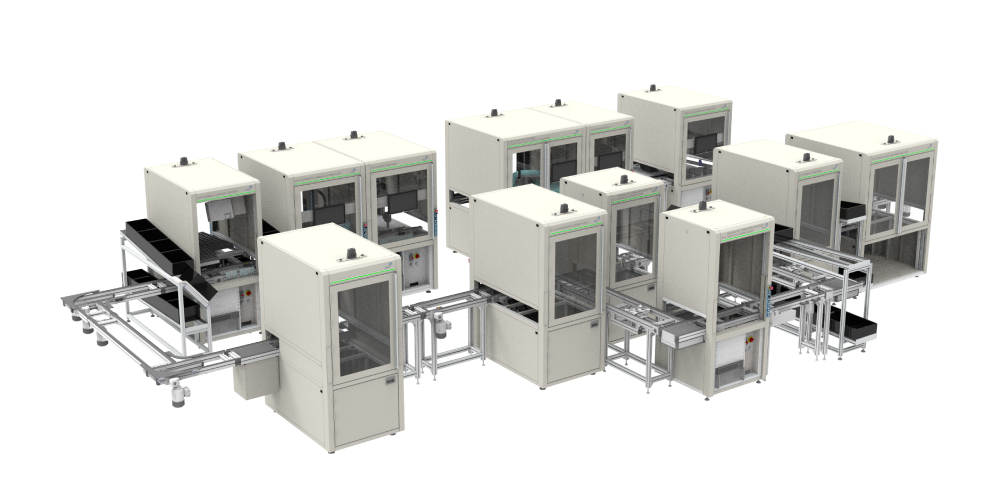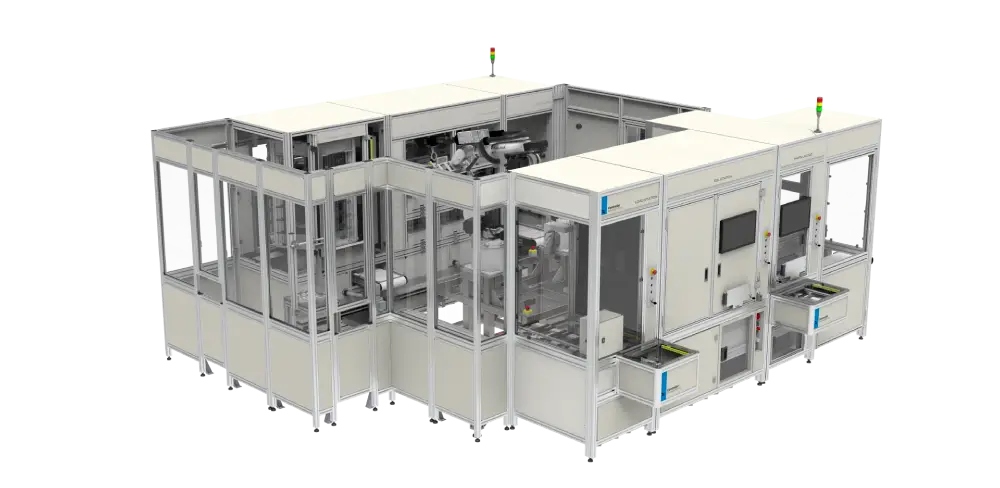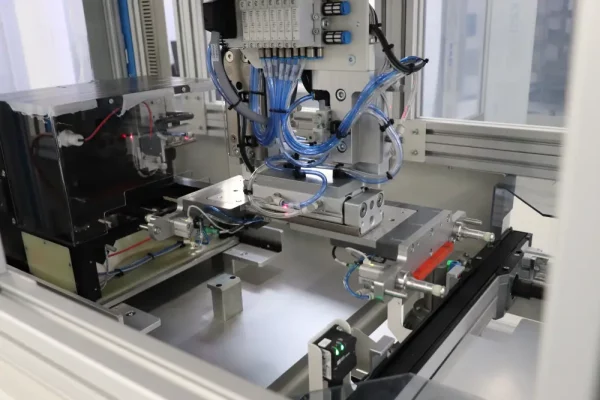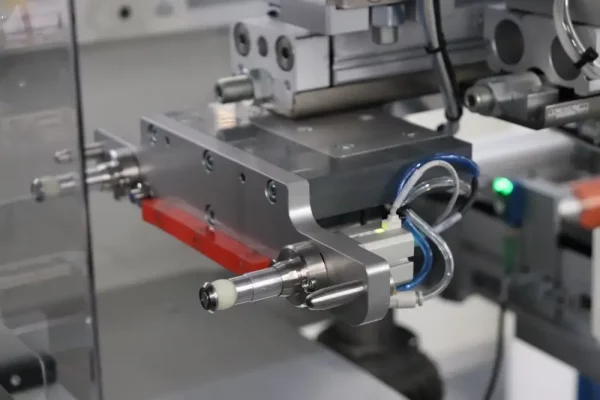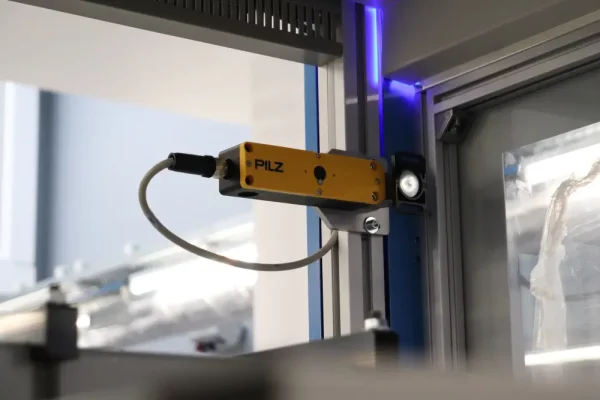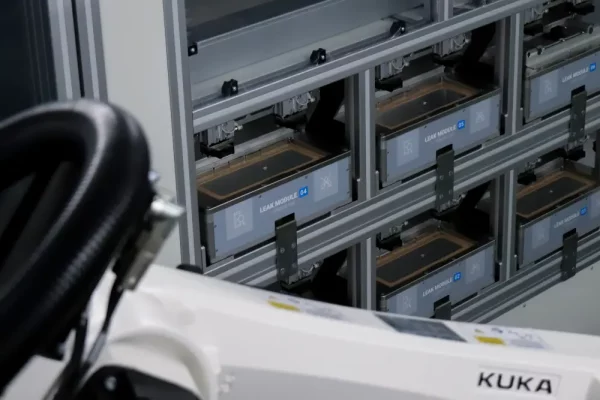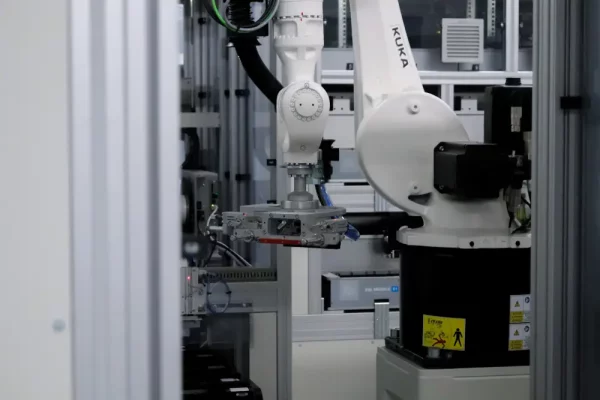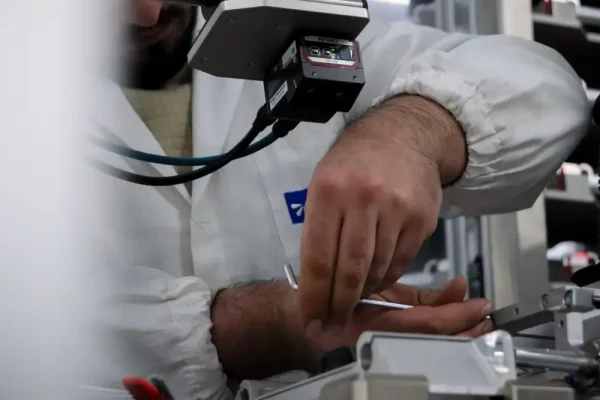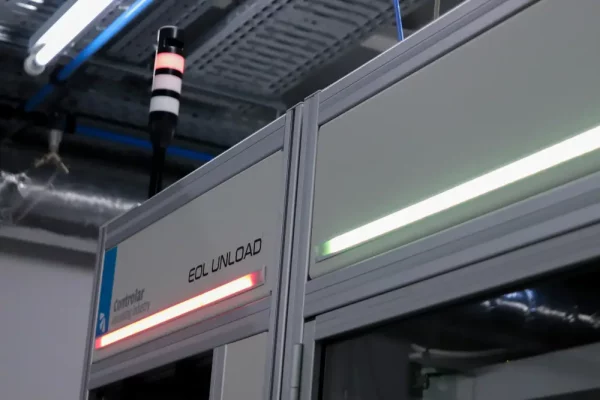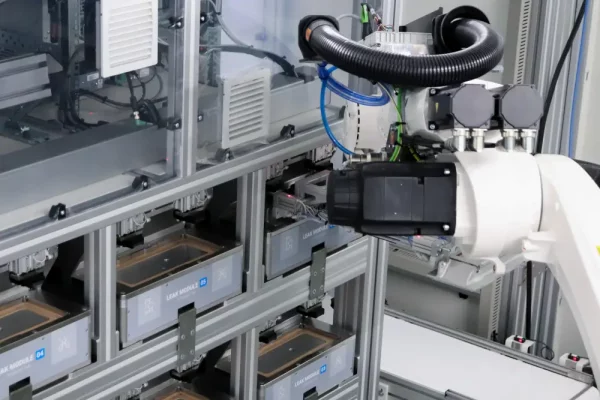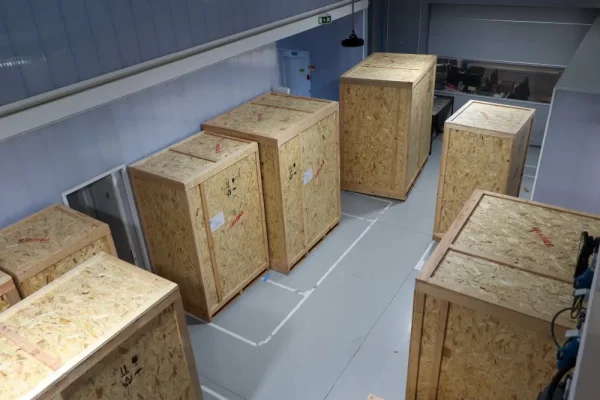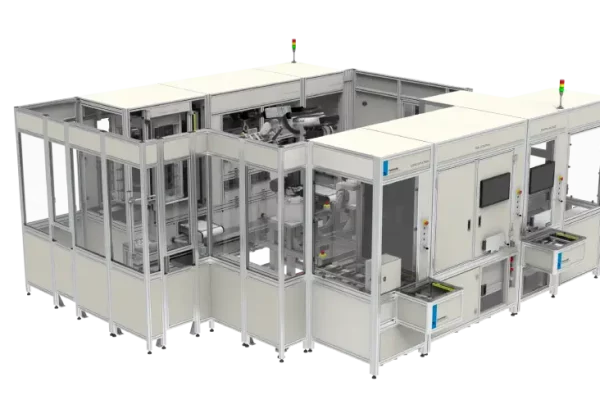Automatic Loading and Plasma Treatment
Automated Assembly Line for Electric Vehicle (EV) Cell Management Control (CMC) of Batteries
Capabilities
Gluing Dispensing and UV Curing
PCB Assembly and Screwdriving
Laser Soldering and 3D Inspection
High Voltage Test
End-of-Line (EoL) Testing
Automatic Labeling and Inspection
Key Features
Robotic precision and speed, delivering flawlessly tested units in just 13 seconds.
Modular design allowing for adaptability and configuration changes to accommodate different products or versions, reducing downtime during transitions.
Cutting-edge software, enabling seamless connectivity and integration with various systems and configurations.
Stringent quality control to ensure every CGC unit leaving this production line meets the highest industry benchmarks.
Easily performed adjustments and calibrations, enhancing operational flexibility.
Overview
This fully automated Automated Assembly Line for Electric Vehicle (EV) Cell Management Control (CMC) of Batteries features a remarkable 13-second cycle time, ensuring swift and accurate processing of batteries at every stage.
The line is strategically divided into two sections: an automated assembly line and an automated test line.The first section dedicated to the assembly of the product comprises a comprehensive array of capabilities distributed among 15 stations. These include automatic loading, plasma treatment, gluing and UV curing, PCB assembly, screwdriving, laser soldering, 3D inspection, among other assembly operations.
The test section comprises a high voltage (HIPOT) test station, a curing station, a leak test station, an End-of-Line (EoL) test station and an automatic labeling and inspection system boosting efficiency, productivity, and quality control.
The modular design of the assembly line allows for adaptation to testing similar products by simply changing modules, ensuring flexibility and versatility in production operations. Furthermore, the leak and EoL stations are equipped with six lightweight and easily removable modules, simplifying maintenance tasks and minimizing downtime.
Line Configuration
- Combined Station of Automatic Loading and Plasma Treatment: Components are efficiently loaded onto the assembly line and subjected to plasma treatment to enhance the surface characteristics and promote the durability of the coatings.
- Gluing Dispensing and UV Curing Station: Ensures precise application of adhesive followed by rapid curing under UV light for optimal component adhesion.
- Stations for PCB Assembly, Screwdriving and Laser Soldering: Exhibit high precision and speed, crucial for achieving optimal electrical connections and mechanical stability, followed by 3D inspection for meticulous verification of the soldering compliance.
- Stations for final assembly operations where components are securely enclosed and integrated, before being loaded for testing.
- High Voltage Test Station: At the heart of the assembly line, a clever high voltage test station ensures the integrity and safety of batteries. The introduction of a rotating gripper allows for the handling of two parts simultaneously, significantly reducing cycle times and enhancing productivity.
- Curing Station: Designed to optimize the curing process, this station ensures the proper formation and stability of battery cells, contributing to the longevity and performance of electric vehicles.
- Leak Test Station: An essential component of quality control, the leak test station employs advanced technology to detect any potential leaks in battery components, safeguarding against performance issues and safety hazards.
- End-of-Line (EoL) Test Station: Serves as the final checkpoint, conducting comprehensive assessments to verify the functionality and compliance of batteries before they leave the assembly line.
- Automatic Labeling and Inspection System: Ensures accurate identification and tracking of batteries throughout their lifecycle, facilitating efficient inventory management and traceability.
Main Applications
This Automatic Assembly Line was developed to meet the high standards of the automotive industry, which makes it suitable for other industries as well, and can be customized for various types of products that require automatic assembly, sorting and inspection of small components.
